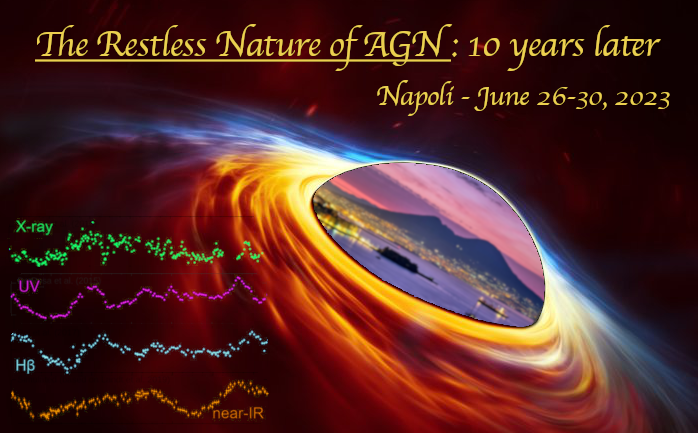Speaker
Description
A few decades have passed since the identification of narrow-line Seyfert 1 (NLS1) galaxies as a subclass of active galactic nuclei (AGN). NLS1s show a Seyfert 1-like spectrum, but with emission line widths similar to those of Seyfert 2 spectra. Such features are often believed to be produced by a high accretion rate, close to the Eddington limit, coupled with a low-mass black hole ($<10^8 M_{\odot}$). Although few compared to the non-jetted sources, also jetted NLS1s have been discovered. By means of targeted observations of radio-quiet and -silent jetted NLS1s, seven sources with an inverted radio spectrum and extreme radio variability were identified. They show rapid high-frequency (37 GHz) flares that increase their flux density up to 9000-fold (Jy level). On the other hand, at low frequency ($<$9 GHz) and in the low state, they only reach flux densities up to mJy levels. Such behaviour may be produced by absorption of the jet emission, via synchrotron self-absorption or free-free absorption. These objects are known as absorbed jets (AJs). Until now, the only common feature that characterises all AJs is their radio spectra. I will present the results of a multi-epoch analysis, devoted to searching optical variability in AJs, using data retrieved from public surveys. For this purpose I performed light curve fitting following different approaches, such as Fourier and Wavelet analysis, and chi-square minimisation techniques, to find any similarity between the AJs. Moreover, a long-term comparison between radio and optical light curves has been carried out, investigating if the optical emitting regions are connected with those generating radio variability. Such strong radio variability had never been observed before in any AGN, making this work an important key to understanding the AJ phenomenon. Furthermore, understanding the physics behind this peculiar phenomenon may ultimately help us reveal a new and unexplored population of jetted AGN.

